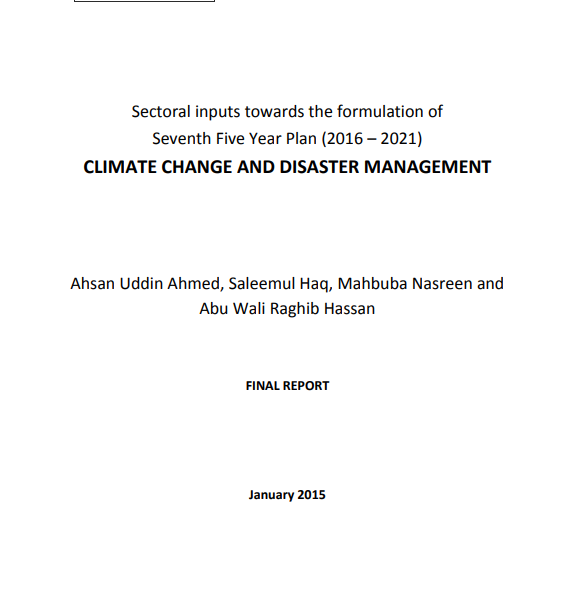The Government of Bangladesh has initiated the process of formulating its Seventh Five Year Plan for the period 2016-2020. A total of 28 background papers, mostly sector-specific, have been identified – each of which will be completed as inputs towards formulating the Plan. The GOB recognizes that the country is highly prone to a variety of hazards and her disaster risk reduction needs are amongst the highest in the world. Moreover, the country and its poor people are most likely to be severely affected by global climate change, which in turn will exacerbate hazard related adverse impacts. As per GOB decision, a paper on climate change and disaster risk reduction is perceived to provide insight into the GOB’s current state of preparation, delivery of services, gaps between needs and services being provided, and future directions to avoid major adverse implications of both climate change and disaster risk reduction.

Background paper for Seventh Year Plan – Strategy for Infrastructure Sector
 February 22, 2021
February 22, 2021 The World Economic Forum regularly updates countries position on competitiveness based on 12 pillars. Infrastructure (transport and energy infrastructure) is a key pillar for economies like Bangladesh. Comparison of infrastructure among developing Asian countries shows that despite progress Bangladesh is still substantially deficient in terms of the quality of infrastructure in regards to all the countries shown in Table 1 except Myanmar. The gap in infrastructure quality is especially large when compared with Thailand, China, India and Sri Lanka. So Bangladesh needs to bring more focus to the efficient implementation of infrastructure investments along with necessary institutional changes relating to implementation, regulation, and policy formulation.

Seventh Year Plan – Financial Market Developments & Challenges-in-Bangladesh
 February 22, 2021
February 22, 2021 The financial sector is a vital part of an economy because of the role it plays in intermediating savings of the private and public sector to productive activities including investment. Bangladesh financial system is dominated by the banking sector, which fundamentally depends on short- and medium-term deposits for financing their lending portfolios. This limits availability of funds that would be required for long-term investments like infrastructure and housing. Bangladesh has a capital market, with its known difficulties, and there is no vibrant secondary market for bonds, which limits the availability of resources for infrastructure financing. This paper starts with a general overview of the current structure of the financial system in Bangladesh in terms of the 4 key markets—money market comprising banks, microfinance institutions and nonbank financial institutions, stock market, bond market and insurance market--and their sizes, relationships between the various markets and the associated regulatory bodies assigned to govern the different market segments.
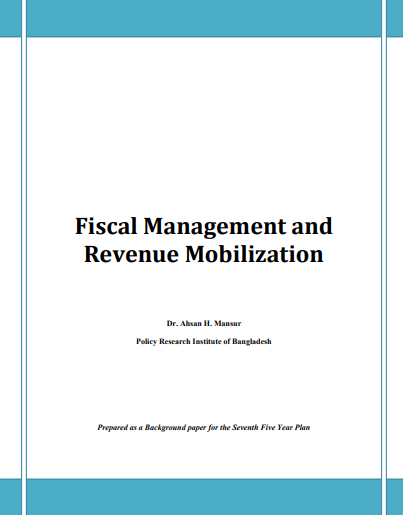
Seventh Year Plan – Fiscal Management and Revenue Mobilization
 February 22, 2021
February 22, 2021 Bangladesh despite being a least developed economy has had a relatively strong track record of prudent fiscal management and has made some progress in revenue mobilization efforts in the last decade. Good fiscal management in terms of keeping the fiscal deficit and public debt at sustainable levels, despite limited public sector resource mobilization, has served as the anchor to Bangladesh’s continued macroeconomic stability. The good fiscal management notwithstanding, public sector service delivery in terms of coverage and quality were seriously constrained by the limited success in resource mobilization.

Seventh Year Plan – Strategy for Export Diversification
 February 19, 2021
February 19, 2021 Leveraging the global demand for commodities as well as services through export-oriented development should then be a strategic goal for the Bangladesh economy in its quest to achieve middle income status by 2021. Bangladesh’s export performance so far presents signs of strength as well as weakness in its export basket. Export concentration has emerged as a formidable challenge to address and overcome.
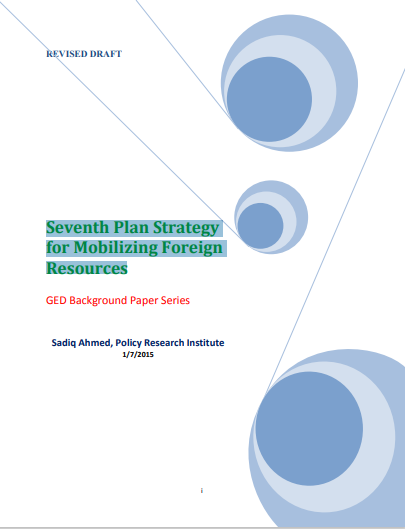
Seventh Plan Strategy for Mobilizing Foreign Resources
 February 19, 2021
February 19, 2021 Since independence Bangladesh has been experiencing a steady increase in the growth rate of real GDP, accelerating from an average of less than 4% per year during 1974-1990 to 6.4% in 2010-13 . This is a remarkable performance, even after allowing for the low initial base. Importantly, this performance is still below true potential, which gives hope that with a stronger performance Bangladesh can expect to attain middle income status by the year 2021 as envisioned in the Government’s Vision 2021 and the 20 year Perspective Plan (Government of Bangladesh, 2011a).
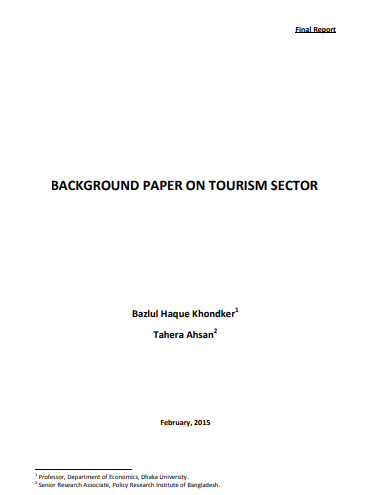
Seventh Year Plan – Background Paper On Tourism Sector
 February 19, 2021
February 19, 2021 The tourism industry has emerged as a major income-driving industry in many developing/middle-income countries in the world. There is a plethora of literature and studies that show the positive a thriving tourism sector can have positive impact on economic growth and development of countries. Bangladesh is blessed with natural beauty, ranging from mountains to rivers to beaches to bio-diversity. It boasts the longest natural beach in the world in Cox’s Bazaar as well as the largest mangrove forest in the world at the Sundarbans.
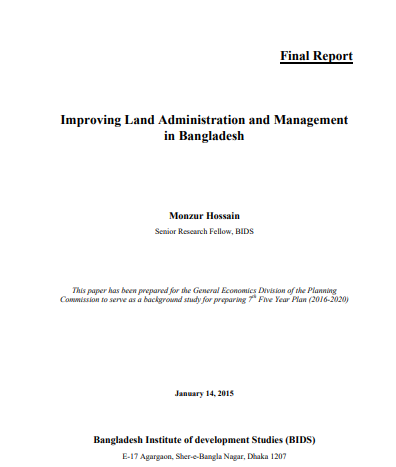
Seventh Year Plan – Improving Land Administration and Management in Bangladesh
 February 19, 2021
February 19, 2021 For efficient and appropriate land management system, maintenance of updated land ROR is very important. To address the inefficiencies involved, it is important to integrate all ownership information and allow all related agencies to share the same up-to-date information. To improve the land administration and management system, there are various solutions as suggested by stakeholders. While some of the solutions appear to be long-term by nature, some are short term. It is not possible to change the current administrative structure overnight to solve all the problems considering various difficulties involved with it. Rather, an IT solution can be sought to integrate the system and allow easy and quick fix of problems.

Seventh Year Plan Strategy for-Education and Training
 February 19, 2021
February 19, 2021 Education has multiple effects—both economic and non-economic. The well-known noneconomic effects relate to health, nutrition, and social cohesion. Better educated population has lower child poverty, lower child and maternal under-nutrition, higher female agency and empowerment. The present paper is about economic effects of education. Encouraging upward economic mobility through deliberate accumulation of educational human capital often spanned over inter-generational frame of reference--while ensuring quality education for all--is one sure time-tested way of fighting the “injustice of poverty” (Galor and Zeira 1993; Sobhan 2011).
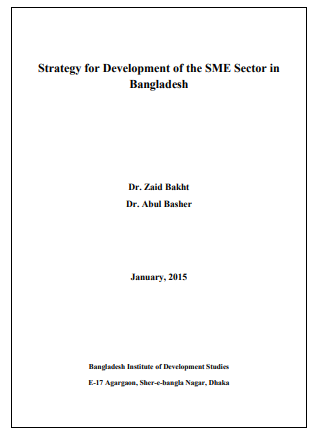
Seventh Year Plan – Strategy for Development of SME Sector in Bangladesh
 February 19, 2021
February 19, 2021 The paper is structured in the following manner. After the introductory remarks in Section I, Section II reviews the status of the overall non-farm sector in Bangladesh based on the Economic Census 2013. Section III discusses current situation of manufacturing SME in Bangladesh based on the Survey of Manufacturing Industry (SMI) 2012.
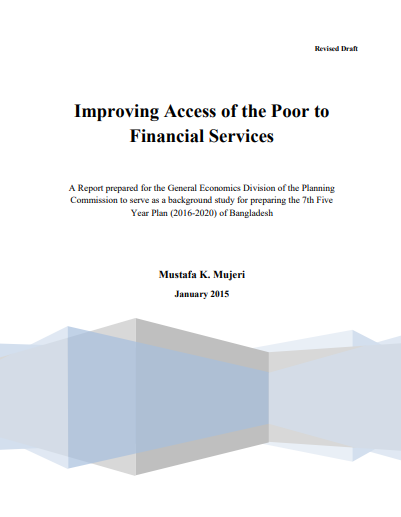
Seventh Year Plan – Improving Access of the Poor to Financial Services
 February 19, 2021
February 19, 2021 In Bangladesh, financial services are provided by a variety of financial intermediaries that are part of the country’s financial system. There are three broad types of providers of financial services—formal, quasi-formal and informal, the distinction is based primarily on whether there is a legal infrastructure that provides recourse to lenders and protection to depositors. Although the formal financial services are provided by financial institutions licensed by the government and subject to banking regulations and supervision, quasi-formal financial services are not regulated by the banking authorities. These institutions are usually licensed and supervised by other government agencies. On the other hand, informal financial services are provided by individuals and institutions outside the structure of government regulation and supervision.

Background Paper on Health and Population Management_February 21 2018
 February 18, 2021
February 18, 2021 The Government of Bangladesh has placed utmost focus to integrate population management issues with healthcare system to ensure healthcare services for all. Initiatives have been taken to ensure availability, accessibility, affordability, and acceptability (4-As) of the health care system in Bangladesh. Consequently, Bangladesh has made remarkable progress in managing healthcare needs of its large population despite several resource constraints. However, there are several areas where greater attention is needed to ensure sustained human development in Bangladesh such as further improvement of maternal and child health, ensuring nutrition of mother and children, addressing youth and adolescent needs, and managing aging population. In this context, it is worthwhile to develop a long-term plan for ensuring quality health care and effective management of population along with identifying their challenges and generating implementation strategies.

